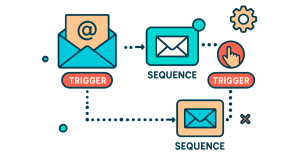SMS marketing is quickly becoming one of the most effective forms of media for businesses to directly engage customers and prospects.
Why? Because the open rates are through the roof and text messages are read almost immediately upon receipt. It’s the most direct, efficient, and quite possibly effective way to communicate with customers who have opted in to receive texts from your company.
But using text messaging to reach customers comes with a few extra strings. You have to do it a certain way to stay legal and compliant, for one. And there are other limitations, too.
That’s why we’ve created this guide to show you the basics of how to do SMS marketing.
SMS Marketing Basics—What to Include
We’ll start with the essence of the medium itself: what to include in text messages to customers, leads, and prospects.
Opt-Out Language
You must tell subscribers how to opt out of receiving texts from your business. The generally accepted method is to say “Reply STOP to unsubscribe,” “Opt out? Reply STOP,” or some variation.
You should also use a phrase like “Text HELP for help” in case people have questions about your SMS marketing.
Because characters in a text are so limited, it works well to combine these phrases to save space. A combined version might say “Reply STOP to end or HELP for help.” emfluence’s SMS service lets you include an opt-out phrase automatically so you don’t have to remember to include it every time.
In your first few texts with a new subscriber, you definitely want to include these phrases. After that, use them every now and then so no one feels trapped into receiving your marketing on their phones.
The First Text—The Welcome Message
While you want to inform a new subscriber about ways to opt out, the very first message should also convey a few more things.
It needs to state how often you plan to text them and that “msg and data rates may apply”. It should also include a link to your terms and conditions and privacy policy. These are all things the subscriber should have already seen when they opted in. But it’s good to text a reminder so they have it in the text thread. Speaking of opt-ins, here’s a good example:

Getting Permission to Text—Opt-In Essentials
Opt-In Must-Have’s
Opting in to receive SMS marketing isn’t the same as opting in to your email list. There are stringent regulations with text messaging because it’s governed by the Telephone Consumer Protection Act, which began before texting even existed, back in 1981.
The most important thing here is to be sure that you’ve received explicit consent from a subscriber that they want to receive SMS marketing from you. Yes, you’re supposed to do that with email too, but the text message requirements are a bit more strict.
You can be fined $500 to $1,500 if you’re unable to prove that you received consent to add a person to your SMS marketing list.
So not only do you need a clear and explicit process and unambiguous instructions, you also need to keep clear and detailed records of who opted in, when, and how.
You’ll want to include the following information anywhere that you solicit opt-ins:
- How often you plan to send text messages
- “Msg and data rates may apply”
- Links to your terms and conditions and privacy policy
- Instructions on how to unsubscribe
Yes, this is the same information you include in the first welcome text. Hit them with it twice so there’s no misunderstanding.
Opt-In Might-Have’s
You’ve seen messages like “Text WORD to 12345” in marketing literature, right?
The WORD is called a keyword, sometimes referred to as a magic keyword. And the five-digit number is called a shortcode. There’s also a long code version, which is a ten-digit number.
Shortcodes are in some ways starting to fall out of favor, in part because they’re very expensive to purchase and own — about $15,000 per year at current rates. That’s not chump change when you could just use a ten-digit number.
Either way, when asking people to opt in, you’ll typically use a message like the one above, where they’ll text a particular word to a particular number.
In some instances, they might be able to opt in through your website or perhaps with a QR code and wouldn’t need this approach.
You might also use keywords in other text messages you send out, in situations where you want people to sign up for something, express interest in a product or event, or vote for something.
Another item you might need could relate to your industry. Some industries, such as healthcare or finance, may have regulations about what you can and cannot share in your communications.
Your opt-in process should address those issues too.
Types of Text Messages
With the emfluence Marketing Platform, you can send SMS text messages. SMS stands for Short Message Service. There’s another kind of message called MMS for multimedia. SMS messages are text-only. MMS messages can include images and animations like GIFs.
SMS messages are limited to about 160 characters. That’s not much. But remember, text messages aren’t typically very long. Again, these aren’t emails. They’re more like tweets.
You’re making very simple offers or sending very simple messages. Just one topic, and it must be crystal clear and bring no baggage.
Best Uses of SMS Marketing
Underpinning all of it is the idea that your subscribers opted in and are expecting to receive occasional offers and other customer service messages. So the best uses of SMS marketing are to send offers and give good service!
You’ll want to send a consistent number of texts per month so subscribers don’t get annoyed but also don’t forget that they registered. And texts should have some sort of exclusivity so they’re not just a constant repeat of what subscribers see posted on social media or through email.
Download our guide to SMS marketing best practices for more.
What Else to Include in SMS Marketing
Most texts you send to subscribers should be offering something, announcing something, reminding them of something — things like this.
That means most of them should have a link. Make sure that link goes to the right page and that the page is optimized for mobile.
You should also include a call to action, and that CTA must be short and ultra-clear.
When appropriate, it’s also smart to use personal details about the subscriber in your message, so they feel like you’re serving them, and not just sending out mass messages. Again, text is personal.
Your Sending Plan
Once someone opts in, then what? How many messages should you send?
Text is distinctly different from email. People are used to getting dozens or even hundreds of emails every day, sometimes several from the same business. But texting isn’t like that. Even if you only sent one text per day, but did it every day, you would quickly upset almost all of your subscribers.
People don’t want to be pestered on their phones.
Here are a few tips about sending frequency and volume:
- Send your welcome text almost immediately after a person opts in — there’s no reason for a delay.
- Send a follow-up message that might contain the perk you offered them as a reward for signing up — there’s no reason to delay this either
- Maintain a consistent general volume of about four texts per month, maybe less. More than one per week is likely pushing it.
- Embrace exceptions to the rules by sending customer service texts, such as shipping notifications as often as needed.
Examples of SMS Marketing Campaigns
Because texts are so short, it’s hard to fit everything you need to say in your first welcome text. That’s why you’ll probably send a couple of messages right away. But after that, your next message should wait at least a few days.
Here’s an example from Subway. Notice how the first text has the phrases and information mentioned earlier in this guide. Then, the second text offers them the perk that motivated them to opt in.

Here’s a welcome text that gives a coupon code the recipient can use when they click on the link provided:

Here’s an order confirmation text that explains the shipping process and includes a link for checking in on their order. Notice that even this message includes an unsubscribe option:

Now that you know the basics of how to use SMS marketing and have seen a few examples of what it can do, a good next step would be to download our SMS best practices eBook. There, you’ll get guidance on SMS marketing and how to do it well so it becomes a profitable form of media and a great customer service and retention tool.
emfluence clients can reach out to the emfluence support team (support@emfluence.com) to activate SMS in their account.


